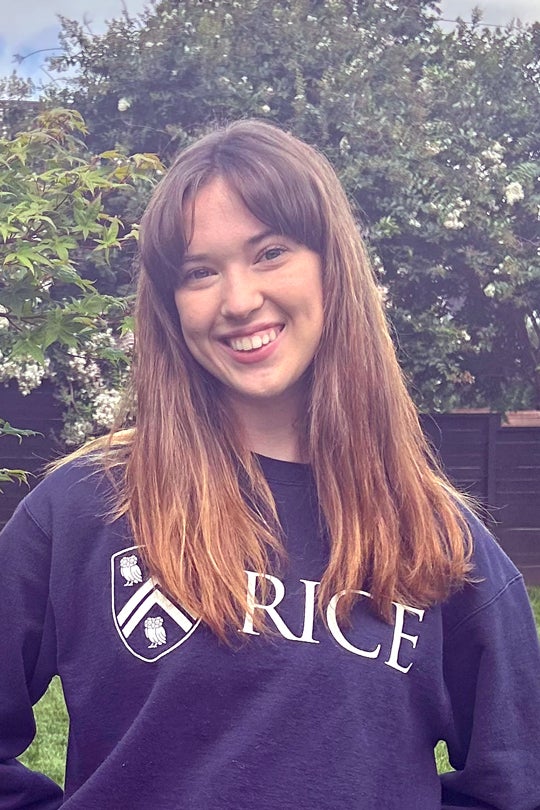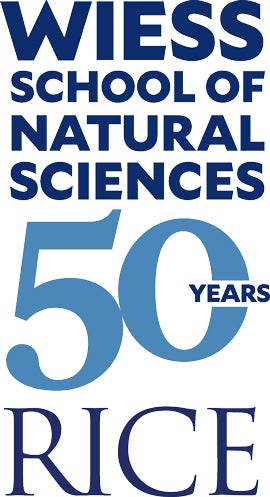As a kindergartener in Nashville, Ava Thienel listened wide-eyed when an astronaut visited her classroom. Imagination sparked and the flames were fanned. During a family trip to Vanderbilt’s Dyer Observatory, she was enthralled by a Hubble Deep Field image.

“I remember thinking, ‘Wow. This one pixel could be a whole galaxy,’” she recalled. “I really do not remember a time in my whole life where astronomy wasn’t my passion.”
Now a senior at Hanszen College majoring in astronomy and physics, Thienel is working with heliophysicist Stephen Bradshaw to answer a longstanding question: Why is the sun’s corona, its outermost layer, hotter than layers below? Thienel is modelling the behavior of coronal loops, massive arches of plasma that may transfer heat directly to the corona from the sun’s surface, and comparing those models to data collected by NASA’s Solar Dynamics Observatory.
“It’s kind of a back and forth,” she said. “We create a model, then look to see if that matches what we observe.”
In 2024, she earned a coveted summer position at NASA’s Goddard Space Flight Center, where she learned to identify different heating frequencies. The work revealed measurable correlations between emission slopes and time lags, especially in low-frequency heating scenarios, lending support to the idea that heating occurs independently in the corona and the layer directly beneath it.
These days, Thienel is refining a computational model to build upon her earlier findings to simulate coronal loop behavior within active regions. More than any one result, she said she values what research has taught her about herself.
“Research is very much teamwork,” she said. “I’ve found that working in a group and being able to share progress and ask questions is something I value. I want to foster that in whatever career I end up doing.”

She wants to be an astronaut, and she’s constantly working toward that goal. In grade school, she completed Space Camp five times, participated in robotics competitions and taught herself chemistry and physics for fun. She’s also amassed more than two years of pilot training and plans to take EMT certification courses through Rice EMS this fall.
“The path isn’t linear,” she said. “If there was a way to immediately get into mission control, I would, but that’s not how it works.”
And working at Goddard revealed a new career path. Thienel plans to pursue a master’s degree in systems engineering with an eye toward working in mission planning and operations.
“They facilitate conversations between scientists and engineers,” she said of systems engineers. “Had I not been at Goddard working on the heliophysics projects, I wouldn’t have known this was a possible path.”
Thienel is still enthralled by the night sky, and gratefully so.
“Looking up at the stars, it is a jumbled mess of warped time and space,” she said, “but it all comes together to foster an innate sense of wonder. I think there’s something really special about that.
“I’ve always had that feeling. Regardless of hard classes, self-doubt, whatever, there’s never been a time when I’ve chosen to ignore my passion for astrophysics. I love it too much to let anything stop me. And I think there’s something valuable in having something that I love so dearly.”

